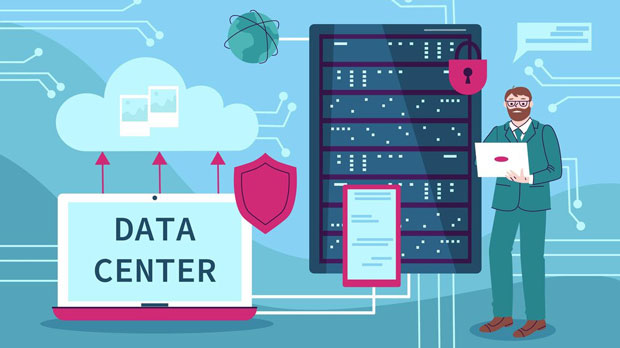In the field of web automation testing, using proxies is essential for simulating real-world browsing conditions, ensuring privacy, bypassing restrictions, and avoiding IP bans. Among the most popular proxy solutions are hydraproxy and PYPROXY, two tools that have gained attention due to their robust features and ease of use. This article compares the performance and suitability of hydraproxy and pyproxy in web automation testing, discussing key aspects such as functionality, ease of setup, scalability, and security features. Through this detailed analysis, users will be better informed to choose the best proxy tool for their specific testing needs. Introduction to hydraproxy and pyproxyBoth hydraproxy and pyproxy are powerful tools used in web automation for managing IP addresses and controlling proxy usage. They allow automation tools such as Selenium or Puppeteer to function seamlessly by masking real IP addresses and rotating them, thus preventing tracking or geo-restrictions from interfering with the testing process.hydraproxy is a lightweight, Python-based proxy tool designed for ease of integration with Python-based testing frameworks. It provides the functionality of handling multiple proxy servers and rotating them for a more secure, anonymous browsing experience.pyproxy, on the other hand, is a more robust, scalable proxy management solution. Known for its advanced features and reliability, pyproxy supports large-scale testing scenarios and offers features such as automatic IP rotation, real-time monitoring, and proxy performance tracking. It’s particularly suitable for large enterprises and organizations that need to test web applications at scale.Functionality and Featureshydraproxy Features:- Proxy Rotation: hydraproxy allows for easy proxy rotation by automatically switching between multiple IP addresses during web automation tasks. This helps simulate real-world browsing behavior and mitigates the risk of IP blocking by websites.- API Integration: hydraproxy offers a clean and simple API, making it an excellent choice for developers who need to integrate proxy management within their testing framework.- Simple Setup: hydraproxy’s installation and configuration process is relatively straightforward, especially for those familiar with Python. It is compatible with several popular Python-based automation tools, including Selenium and Scrapy.- Custom Proxy Handling: Users can manually configure the proxy list and set parameters like timeout, retries, and maximum concurrent connections. This gives full control over proxy behavior during testing.pyproxy Features:- Advanced Proxy Rotation: pyproxy boasts advanced IP rotation capabilities. It supports not only rotating proxies but also rotating user proxies, which adds another layer of anonymity.- Scalability: Unlike hydraproxy, pyproxy is designed to handle large-scale operations. It can manage thousands of proxies simultaneously without significant performance degradation.- Real-Time Monitoring: pyproxy provides real-time monitoring of proxy usage, including metrics like response time, success rate, and failed attempts. This feature is especially useful for identifying performance issues early in the testing process.- Automatic IP Blocking and Geo-Restriction Bypass: pyproxy automatically circumvents IP blocks and geo-restrictions by rotating through a large pool of proxies from different regions, making it ideal for global testing scenarios.Ease of Setup and Integrationhydraproxy Setup:Setting up hydraproxy is relatively simple for those familiar with Python. The process generally involves installing the necessary Python packages, configuring proxy ips, and integrating with automation frameworks. The Python-based approach offers a familiar environment for many developers, which reduces the learning curve. However, for teams without a dedicated Python developer, this could present a slight challenge.pyproxy Setup:pyproxy, while powerful, is a bit more complex to set up compared to hydraproxy. Its scalability and broader range of features come at the cost of a steeper learning curve. Users must configure both the proxy server and their testing framework to communicate efficiently. This may involve more manual work during initial setup, especially for those unfamiliar with advanced proxy configurations. However, pyproxy offers detailed documentation and support to guide users through the process.Performance in Web Automation Testinghydraproxy Performance:hydraproxy performs well in small to medium-scale testing environments. It can handle moderate proxy rotation and is quite effective at simulating typical user interactions without being detected. However, due to its limited scalability and lack of advanced monitoring features, hydraproxy may not be suitable for very large or highly complex test cases. Performance can degrade when handling a high volume of proxy requests or when scaling to large teams.pyproxy Performance:pyproxy excels in high-volume and large-scale web automation testing scenarios. Its ability to manage a large pool of proxies, combined with real-time monitoring and IP blocking bypass, ensures that tests run smoothly even in the most demanding environments. Its automatic proxy rotation minimizes the risk of IP bans, and its scalability ensures that there’s no performance degradation regardless of the test’s complexity or volume.Security and Privacyhydraproxy Security:Security in hydraproxy mainly revolves around its ability to provide anonymous browsing and avoid IP detection. It doesn’t have built-in security features like encryption, but it does allow users to integrate third-party security measures, such as VPNs or encryption layers, into their proxy setup.pyproxy Security:pyproxy has an edge in security features. With real-time proxy performance tracking and IP blocking, it ensures that web automation tests remain anonymous and undetected. pyproxy also has enhanced support for geo-targeted proxies, which allows for secure browsing from different locations, making it ideal for privacy-conscious testing.Cost Considerationshydraproxy Cost:One of the main advantages of hydraproxy is its low cost. As an open-source tool, it is free to use, making it a cost-effective option for small businesses, freelance developers, or those with limited budgets.pyproxy Cost:pyproxy, while powerful, comes with a subscription cost. The pricing is tiered based on the number of proxies required and the scale of the user’s testing environment. While it is more expensive than hydraproxy, it is a worthwhile investment for large-scale enterprises or organizations needing to conduct frequent, high-volume automation tests.Both hydraproxy and pyproxy offer valuable proxy management solutions for web automation testing, but their features and performance differ significantly. hydraproxy is an excellent choice for small to medium-scale projects that require simple proxy rotation and ease of integration with Python-based frameworks. Its affordability and simplicity make it appealing for developers working with tight budgets or smaller teams.On the other hand, pyproxy is more suited for large enterprises or complex testing environments where scalability, advanced proxy features, and real-time monitoring are essential. While its setup is more complicated and it comes at a higher cost, the performance, security, and support it offers are unmatched for users needing to handle large-scale automation tasks.Ultimately, the choice between hydraproxy and pyproxy depends on the scale of your testing needs and the resources at your disposal. Small teams or independent developers may find hydraproxy more than sufficient, while larger organizations with high demands will likely benefit from pyproxy’s robust feature set.
Oct 13, 2025



































































